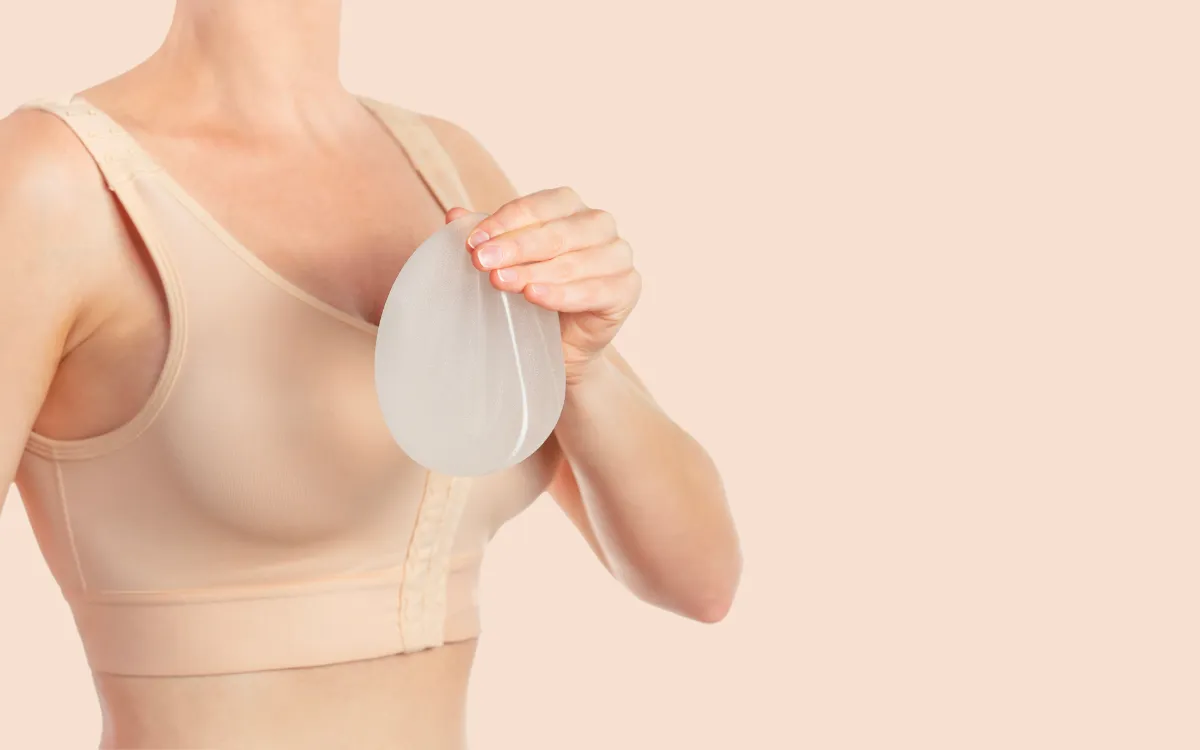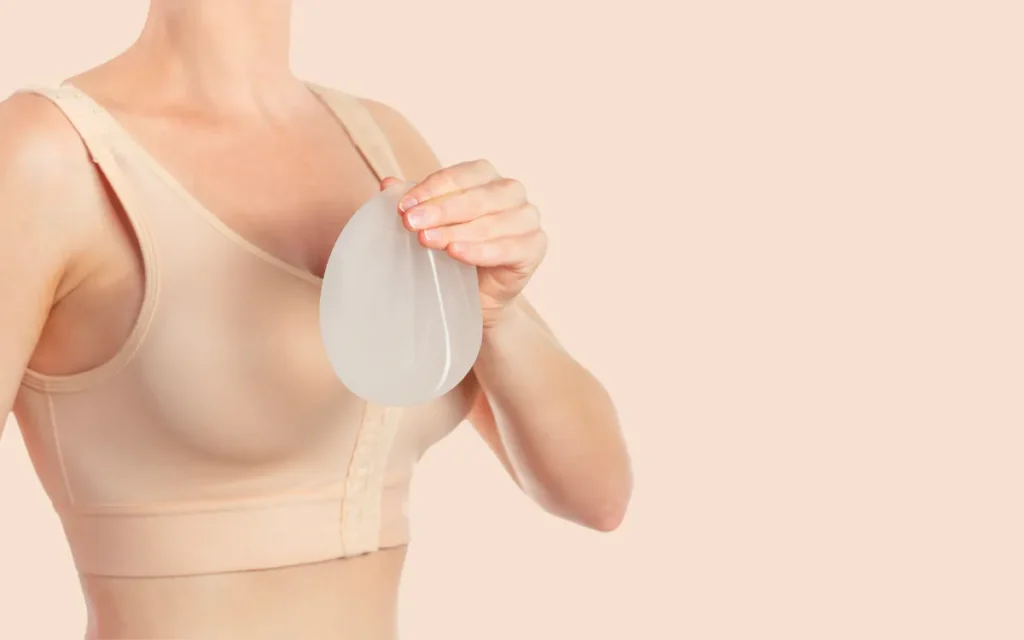Breast Implant vs Fat Transfer: What You Should Consider Breast
By Partington Plastic Surgery on August 18, 2025 in Breast Implants, Fat Transfer, On Top

Women now have more options than ever when it comes to getting breast implants. Two of the most popular options are fat transfer and breast implants. There are pros and cons to fat transfer vs breast implant procedures. However, how can you choose which is best for you personally?
Let’s look at the differences between implants and fat transfer. The distinctions between these two approaches will be analyzed here. We can assist you in selecting the approach that will work best for your body and your objectives.
The Basics: Implant vs Fat Transfer
Let us review each procedure’s purpose before delving into the specifics.
There are many ways to do fat transfer and breast implants, and the results and recuperation times might also be diverse. Both are meant to make the breasts bigger and more shaped, but they do it in different ways.
Many patients ask about fat transfer vs breast implants before surgery. Breast implants are fake devices that are surgically put into the breast tissue to make them bigger and better shaped. Dr. Partington’s ON TOP® Technique is a new way to put in breast implants that gives you natural-looking results and the best placement.
To transfer fat, you have to have liposuction to take fat out of another portion of your body, usually your belly, thighs, or flanks. The fat is then cleaned up and put into the breast area to make it bigger and give it a fuller, more sculpted look.
Fat transfer vs breast implant procedures come with their own pros and cons. Let’s look at them side by side to assist you in making a choice.
Natural Look
Confident Beauty
24 Hour Rapid Recovery, Muscle Sparing.

Natural vs. Synthetic
One of the biggest differences in fat transfer vs implants is the material used. Fat transfer is a natural way to get the results you want, while implants are not.
Using your own body fat for fat transfer gives a natural look and feel. The fat is taken from areas like the thighs or stomach. It is then placed into the breasts. This choice gets rid of the need for foreign materials and the chance of problems with the implant, including capsular contracture.
Silicone breast implants are placed inside the breast. Modern implants look like natural tissue. However, they contain synthetic materials. This can make them feel less natural than fat transfer.
Procedure Differences: Fat Transfer vs Implants
Fat transfer vs breast implant both aim to improve breast shape and volume. The steps for each of these natural breast augmentation methods are very different.
Liposuction is the first step in fat transfer. People use liposuction to remove fat from the thighs, belly, or flanks. The fat is cleaned after removal. Then it is injected into the breasts. Fat transfer vs implants shows that the fat transfer is less invasive. Healing usually takes less time. Not all the moved fat will stay in place. You may need more than one session to get the desired results.
When comparing implant vs fat transfer, breast implants involve a more complex surgery. Dr. Partington’s ON TOP® Technique places the implants above the chest muscle. This helps recovery go faster and makes the results look more natural. The implant sits above the muscle, so it sticks out more. Recovery is also less painful. Results from implants are typically reliable and consistent. But the procedure is more invasive, and the recuperation period is longer.
Recovery and Downtime
When deciding between fat transfer vs implants, recuperation time is another important thing to think about.
It is usually easier and faster to recuperate from breast fat transfer. The downtime of breast augmentation with fat transfer is usually less because the process is less invasive. Patients may have bruising and swelling at the donor and recipient sites. This usually goes away in a few days to a week. Most people return to work in one to two weeks. You might need to wear compression clothes to help the healing process and sustain the fat cells that were just injected.
Implant recuperation with the ON TOP® Technique is also rather speedy, but it usually takes longer than fat transfer recovery. You may have pain, swelling, and bruising in your breasts. These symptoms can last up to two weeks. Your body may need several months to adjust to the implants. The final results may take time to appear.
Lifespan: Implant vs Fat Transfer
Both procedures offer distinct consequences when it comes to how long they last. Your doctor can explain the differences in fat transfer vs breast implant options.
Fat transfer gives you results that last for a while, although some of the fat will eventually be reabsorbed by the body. Most of the time, 40% to 60% of the fat that is moved will stay in place forever. If the results are not satisfactory, you may require more fat transfer treatments to get the necessary volume.
Outcomes from breast implants are more reliable and long-lasting. If you adhere to post-surgery recommendations, high-quality implants can last for a very long period. But after ten to fifteen years, they could need to be replaced. This may occur due to changes in breast tissue, rupture, or deflation. The ON TOP® Technique makes sure that the implants stay in place and give consistent results, but remember that implants are not permanent.
Risk of Complications

Comparing fat transfer vs breast implant helps you weigh the benefits and risks. There are always hazards with augmentation breast implant surgery. There are possible problems with both implant and fat transfer, but they are different kinds of problems.
Implant vs fat transfer shows fat transfer is usually safer because it avoids foreign substances in the body. It is still possible, however, that the results would be inconsistent or that the fat will be reabsorbed. In very rare cases, fat transfer may result in calcification or fat necrosis. These problems are usually uncommon and can be fixed, but they can change the ultimate result.
There is a slightly increased chance of problems with implants. Implant problems, including capsular contracture, implant rupture, or infection, might happen, but they are not common. Placing the implant above the muscle lowers some risks with the ON TOP® Technique. But it is still important to know the possible long-term effects.
Cost Considerations
When choosing between fat transfer vs breast implants, cost is a big concern.
When comparing fat transfer vs implants, fat transfer often has lower upfront costs because it avoids implants and complex tools. Nevertheless, more sessions could be necessary to achieve the intended outcomes. This can increase the total cost over time.
On the other hand, breast implants usually cost more up front. The ON TOP® Technique operation usually costs more than fat transfer since breast implant surgery is more complicated and high-quality implants are more expensive. Due to their longer lifespan and more consistent outcomes, implants may be preferred by certain women. Despite their initial higher cost, implants may be a better option.
Size and Appearance Factors
It’s crucial to consider the breast size and look you want when choosing an implant vs fat transfer.
Women who want to gain a little weight should use fat transfer. Patients who want a big breast increase may not want to use fat transfer because it doesn’t add as much volume as implants. When comparing fat transfer vs implants, the first one offers a natural look and feel. It is ideal for people who want a small change.
Breast implants are the best option if you wish to significantly increase the size of your breasts. The ON TOP® Technique lets you choose the size, shape, and placement of your implant. Implants can give you the volume and projection you want. They work for a natural look or a more dramatic one.
What Should You Consider?
There are a number of things to think about when deciding on fat transfer vs breast implants. Take into account the following when you’re making your choice:
· Your aims. Would you like a minor alteration? Are you hoping for a more significant change?
· The type of your body. Women who have enough body fat to harvest are the greatest candidates for fat transfer. You can be thin and not have enough fat to donate. Consequently, implants might be a better option.
· Long-term dedication. Future operations and increased maintenance are necessary for implants. With less dedication, fat transfer provides longer-lasting, more natural results.
The implant vs fat transfer procedures each have different benefits. The selection is based on your aesthetic objectives and personal preferences. Choosing between fat transfer vs implants is a decision. It is based on desired volume and recovery time. The type of results you’re looking for influences, too.
The discussion of fat transfer vs breast implants is common in cosmetic surgery. Fat transfer may be best for people who want a natural, gradual change. Breast implants, especially with the ON TOP® Technique, may be better for those who want dramatic, long-lasting results.
Talk to Dr. Partington about your options. Determine which method is most appropriate for you. Breast implants and fat transfer are two ways to achieve fuller, more attractive breasts.
Return to Overview